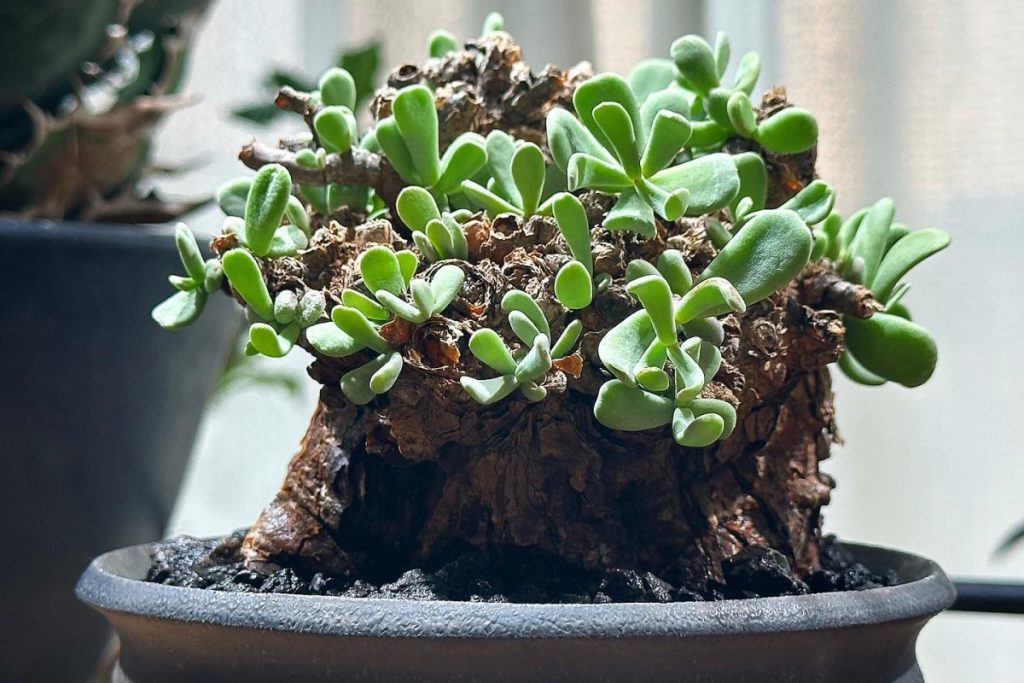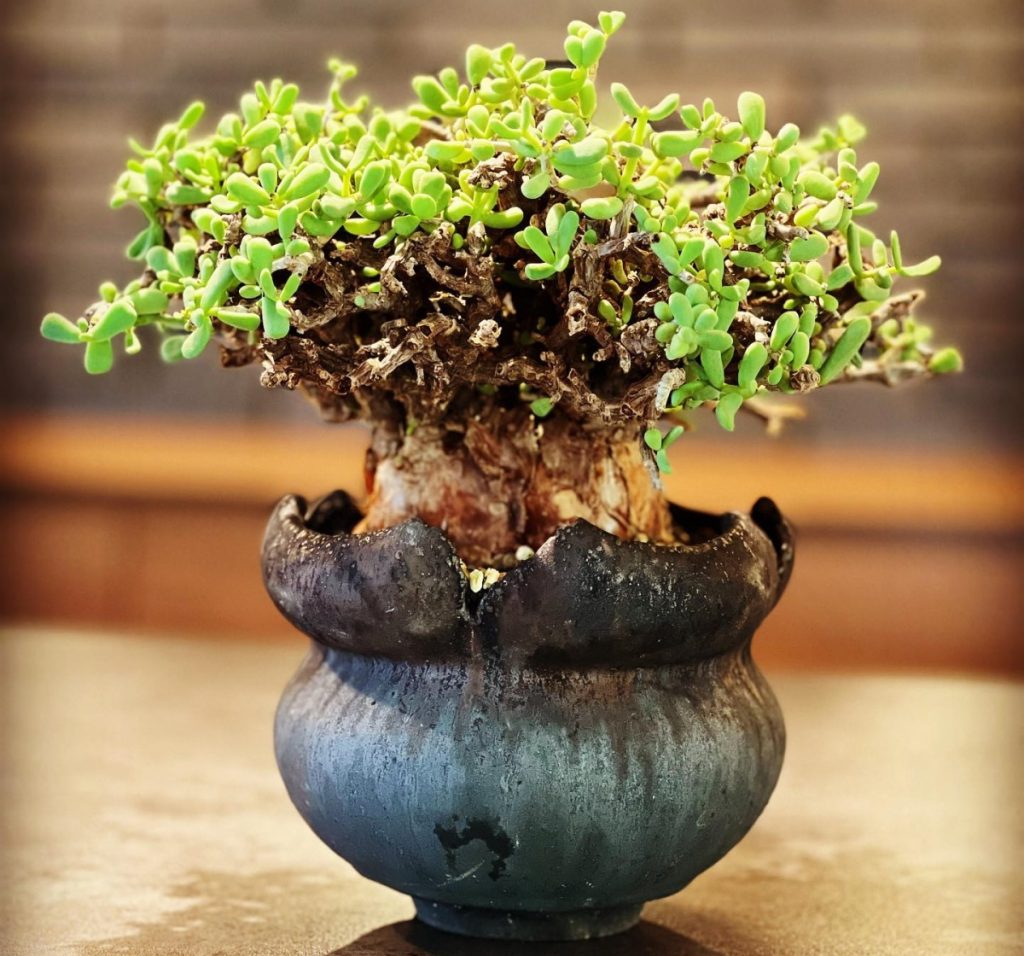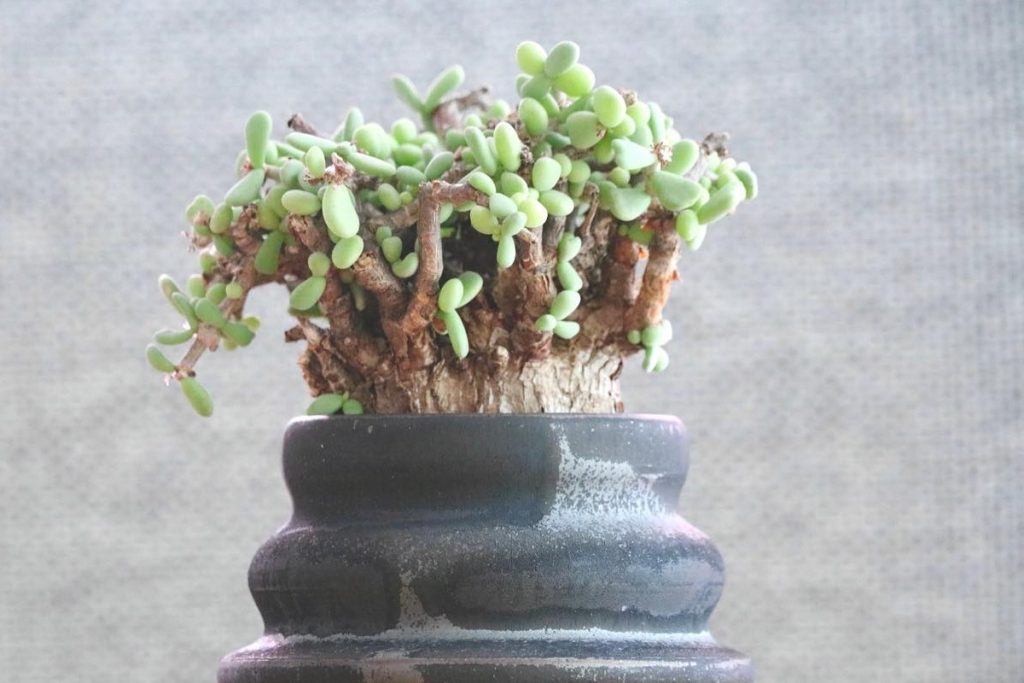Ceraria pygmaea: The Perfectly Petite Pot Companion
Get ready to meet your new plant bestie – the utterly charming Ceraria pygmaea! This miniature succulent may be tiny, but it packs a serious punch of personality. With its quirky looks and easy-going nature, it’s the perfect petite pot pal.

Contents
About Ceraria pygmaea
Let’s take a moment to appreciate the full glamour of this succulent sensation. As a dwarf dioecious evergreen plant, Ceraria pygmaea matures into a fat, tuberous rootstock up to 4 inches wide – like an adorable little turnip in the soil! Its woody base sprouts those signature short, stiff branches with a silver-gray bark that spread out in the most charming way.
Despite its small size of up to 8 inches tall and 12 inches wide, this succulent forms the cutest little mounds that’ll make you go “awww.” Its warty, jelly bean-shaped leaves in bluish or yellowish hues give it an adorably quirky look.
But here’s the real kicker – Ceraria pygmaea is a drought-defying diva! It can store water not just in its trunk but also in those fabulous fleshy leaves. And let’s not forget those tiny, pale pink flowers that pop up in terminal clusters of 2-6. It’s like this plant is putting on a delightful little show just for you!
Related Post:
1,000 Types of Succulents with Pictures
How To Care For Ceraria pygmaea
Alright, let’s dive into how to keep your Ceraria pygmaea looking its finest. Don’t worry, it’s all pretty straightforward – this little succulent is a low-maintenance dream!
Light
Like a budding starlet, your petit plant prefers bright, indirect light. Think of setting up a chic little spotlight situation for it, whether that’s by a sunny window or under a grow light. Just don’t put it in direct, blasting sun – that’d be like scorching stage lights for its delicate leaves!
Water
When it comes to hydration, think “drought-friendly diva.” Ceraria pygmaea likes a deep, thorough soak around every 2-3 weeks in spring and summer. In winter, it’s totally fine dialing the waters back to more like a monthly drench. The key is letting that soil go completely dry between waterings. Soggy soil is a total no-go for this plant!

Soil
Since great style begins from the roots up, you’ll want to set your succulent star in a fast-draining cactus or succulent soil mix. If your blend seems too moisture-hogging, just toss in some extra perlite or pumice for better airflow and drainage. A gritty, chunky mix is ideal for preventing soggy soil syndrome.
Fertilizer
When it comes to plant food, less is more for Ceraria pygmaea. A balanced cactus fertilizer applied very lightly during spring and summer is plenty to keep it flourishing. Remember, this plant likes things on the lean side, so don’t overfeed!
Temperature and Humidity
Your mini marvel is pretty flexible on the temperature front, but it does best with bright warmth between 50-77°F. As for humidity, drier is better for avoiding pests or rot. A hot, arid environment is right up Ceraria’s alley.
Pests and Problems
Being the tough little thing it is, Ceraria pygmaea doesn’t often run into too much trouble. That said, keep an eye out for common succulent pests like mealybugs or fungal issues like root rot from overwatering. But with its robust defenses, your plucky plant usually stays pretty problem-free!
Pruning
Since this succulent grows in such a perfectly petite, contained form, it honestly doesn’t need a ton of pruning. At most, you may want to snip off any reverted growth or unwanted offshoots during spring to keep it looking its best. But overall, its cute lil’ shape basically maintains itself!
Potting and Repotting

One of the best parts about Ceraria pygmaea is how low-maintenance it is in the pot department. You’ll only need to give it some new digs every 2-3 years in a planter just an inch or two wider than the previous one. Use a well-draining cactus mix, and you’re all set!
Propagating Ceraria pygmaea
Want to multiply your mini succulent joy? Ceraria pygmaea is super easy to propagate from cuttings or seeds!
Cuttings:
- Using a sterile knife or scissors, snip off a healthy offset or stem piece
- Allow the cut end to dry out for a few days until calloused over
- Then just pop that cutting into a well-draining soil mix!
- Within a few weeks, new roots should start sprouting
- Once it’s established, you’ve got yourself a fresh new Ceraria pygmaea baby!
Seeds:
- Collect and sow the seeds into a gritty cactus mix
- Keep the soil lightly moist and in a warm, bright spot
- You should see sprouts within a couple weeks
- When the seedlings are a few inches tall, transplant them into their own little pots
- Voila – a whole new generation of petite pot pals!
There you have it, succulent lovers – the total scoop on keeping your charming Ceraria pygmaea looking like a million bucks. With its irresistible quirky looks and easy-breezy care requirements, this mini marvel makes the perfect petite pot companion for cactus fans of all ages. So go ahead and adopt one of these scene-stealers today – your plant fam won’t be complete without it!
